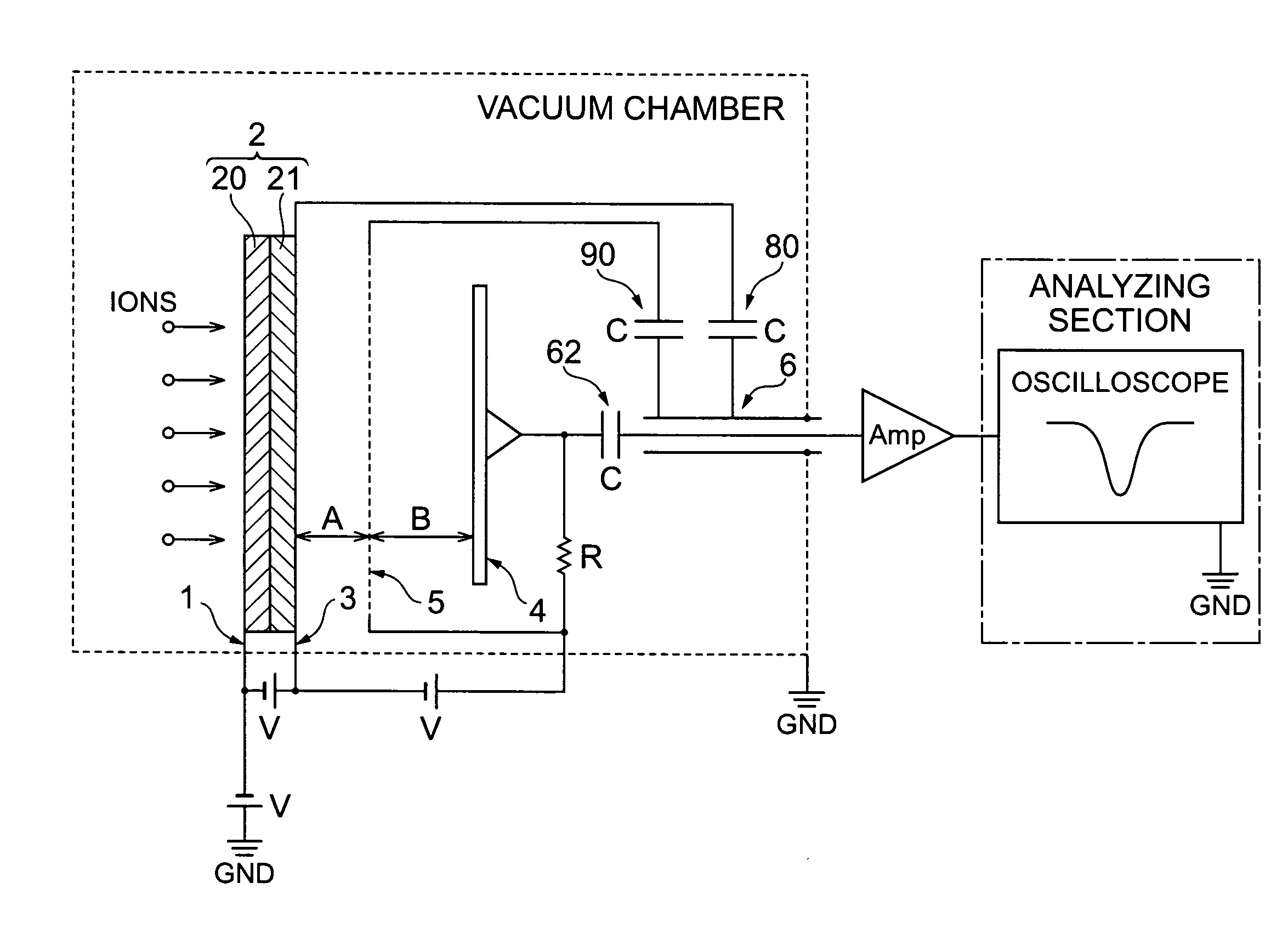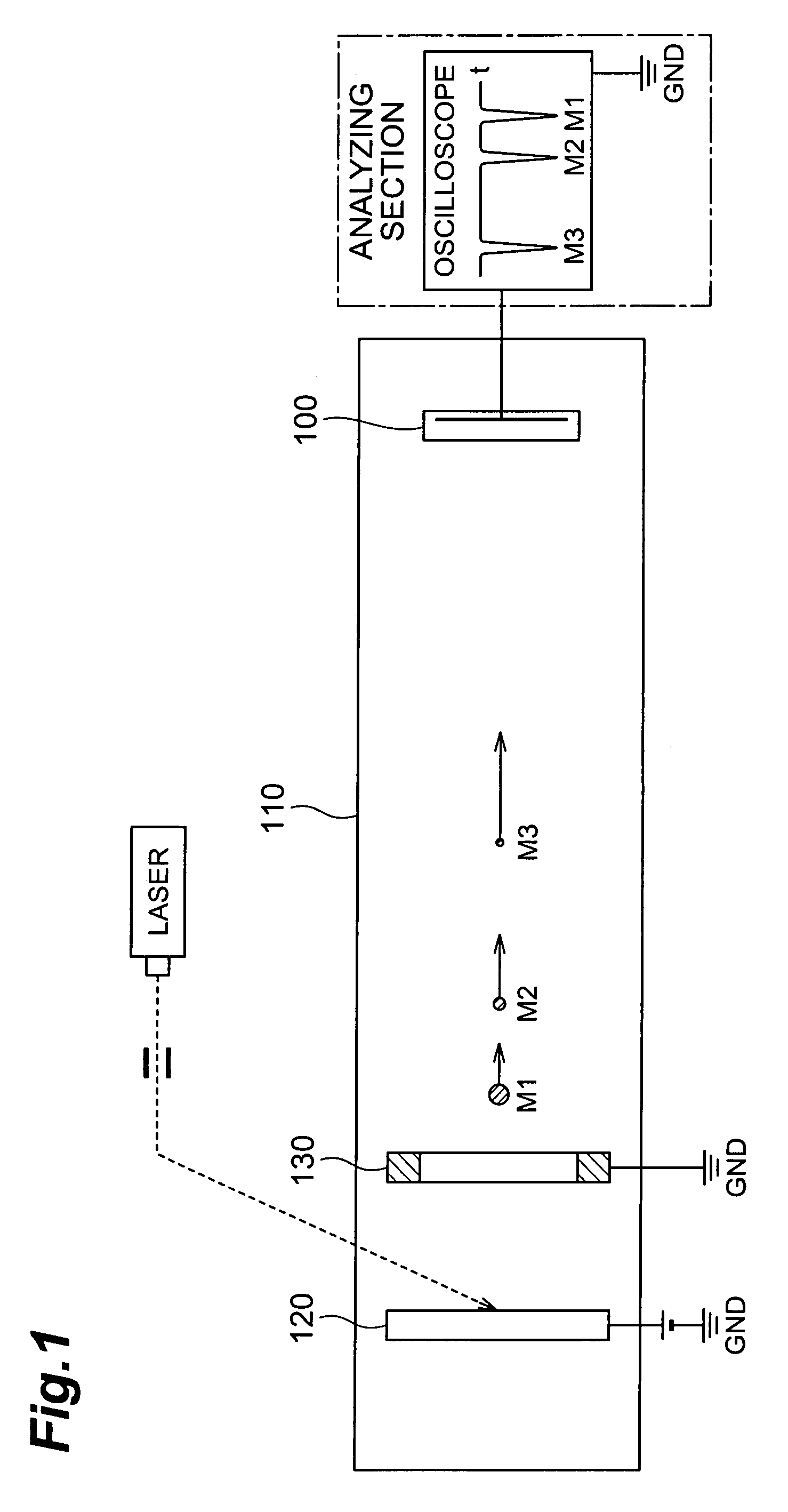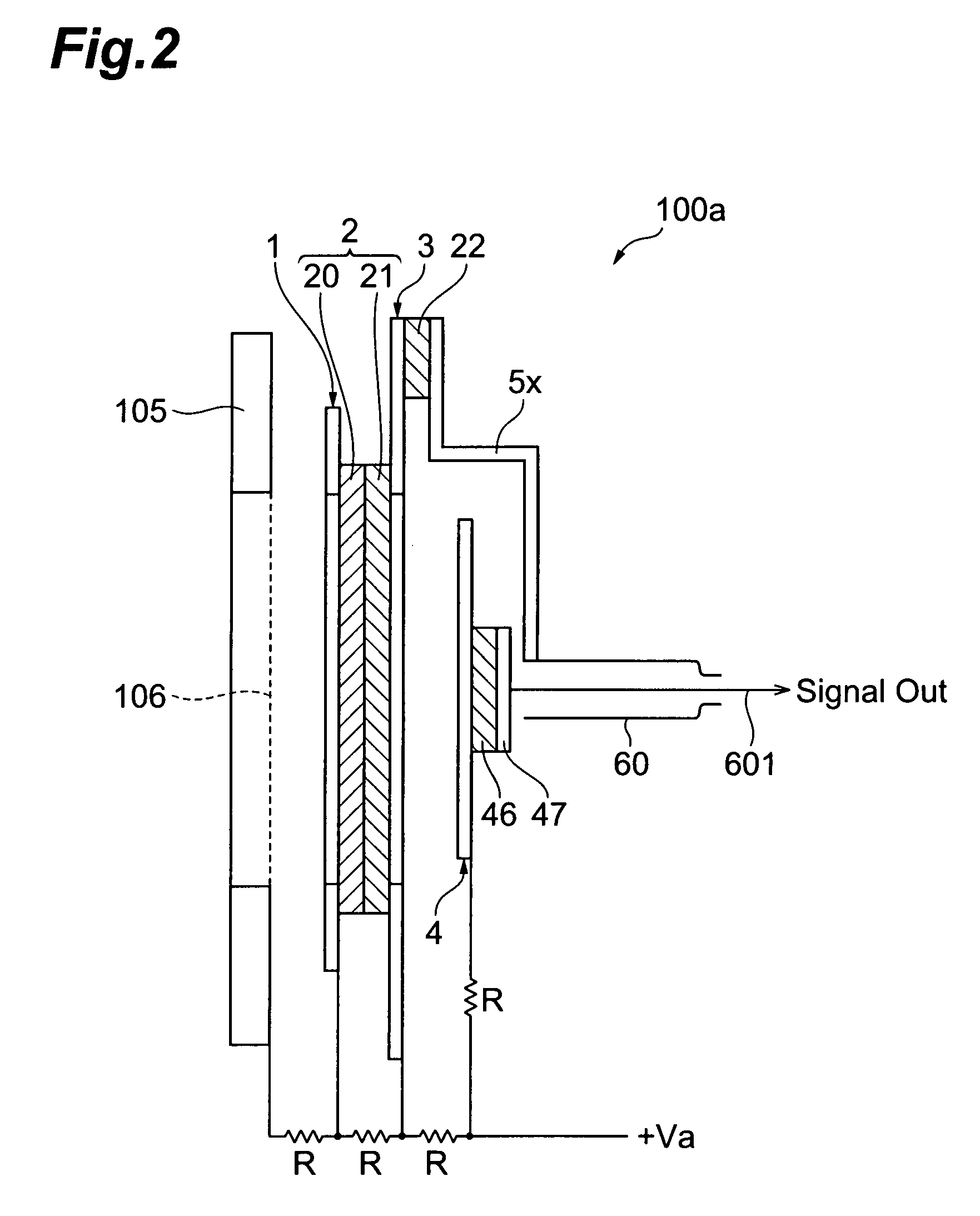MCP unit, MCP detector and time of flight mass spectrometer
a mass spectrometer and detector technology, applied in the direction of instruments, particle separator tube details, separation processes, etc., can solve the problems of inability to perform waveform shaping of detected peak, many manufacturing difficulties in rendering channel diameter small, and inability to extend the time of flight. , to achieve the effect of inhibiting the time spreading of secondary electrons
- Summary
- Abstract
- Description
- Claims
- Application Information
AI Technical Summary
Benefits of technology
Problems solved by technology
Method used
Image
Examples
first embodiment
[0047]FIG. 3 is an assembly process chart showing a configuration of the first embodiment of the MCP detector according to the present invention. FIG. 4 is a diagram showing a cross-sectional structure, along the line I-I in FIG. 3, of the MCP detector according to the first embodiment. FIG. 5 is an equivalent circuit diagram of the MCP detector according to the first embodiment shown in FIGS. 3-4.
[0048]The MCP detector according to the first embodiment has a configuration in which an IN-electrode 1 (first electrode), an MCP cluster 2, an OUT-electrode 3 (second electrode), an acceleration electrode 5, and an anode electrode 4 (third electrode) are arranged in this order along a tube axis (reference axis) AX. The MCP cluster 2 is constituted by two disk-shaped MCPs 20, 21. On an incident surface (front surface where charged particles reach) side of the MCP cluster 2, the IN-electrode 1 (first electrode) is arranged, while on an exit surface (rear surface) side thereof, the OUT-elect...
second embodiment
[0079]Subsequently, a second embodiment of the MCP detector according to the present invention is described in detail with reference to FIGS. 15 to FIG. 18. In the MCP detector according to the above-described first embodiment, the floating anode structure is adopted; and in the MCP detector according to the second embodiment, a grounded anode structure is adopted.
[0080]FIG. 15 is an assembly process chart showing a configuration of the second embodiment of the MCP detector according to the present invention. FIG. 16 is a diagram showing a cross-sectional structure, along the line II-II in FIG. 15, of the MCP detector according to the second embodiment. FIG. 17 is an equivalent circuit diagram of the MCP detector according to the second embodiment shown in FIGS. 15 to 16. FIG. 18 is an assembly process chart of the MCP detector according to the second embodiment, in which a 2-terminal structure is adopted as a modification of the voltage application structure.
[0081]The MCP detector ...
PUM
 Login to View More
Login to View More Abstract
Description
Claims
Application Information
 Login to View More
Login to View More - R&D
- Intellectual Property
- Life Sciences
- Materials
- Tech Scout
- Unparalleled Data Quality
- Higher Quality Content
- 60% Fewer Hallucinations
Browse by: Latest US Patents, China's latest patents, Technical Efficacy Thesaurus, Application Domain, Technology Topic, Popular Technical Reports.
© 2025 PatSnap. All rights reserved.Legal|Privacy policy|Modern Slavery Act Transparency Statement|Sitemap|About US| Contact US: help@patsnap.com



